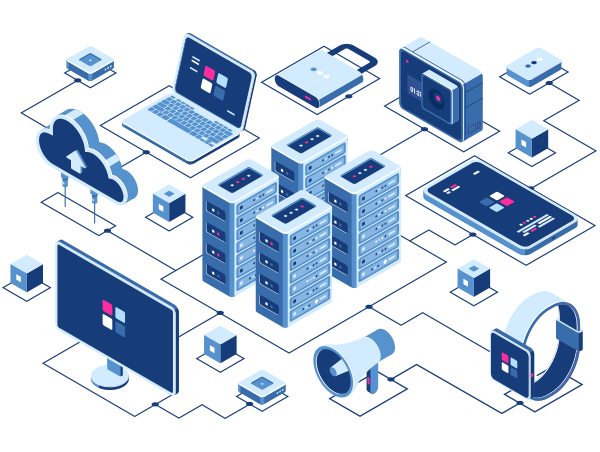


The collective elements required for the operation and management of enterprise IT services and IT environments are collectively referred to as information technology infrastructure, or IT infrastructure.
Nearly every part of today’s organisations, from operations to products and services to the job of a single person, is powered by technology. Technology may be used to enhance communication, create efficiency, and boost production when it is correctly networked.
If an organization’s IT infrastructure is adaptable, dependable, and secure, it can assist in achieving its objectives and provide it a competitive edge in the marketplace. As an alternative, firms may experience connection, productivity, and security difficulties, such as system outages and breaches, if an IT infrastructure isn’t correctly built. Overall, whether a business is lucrative or not can depend on how well its infrastructure is implemented.
Using IT infrastructure, a business can:
Ensure that customers may access the company’s website and online store without interruption. Rapidly create and introduce solutions to the market. Gather information in real time to aid in decision-making. Boost workplace productivity.
Although company demands and objectives influence how an IT infrastructure is set up, some objectives are common to all businesses. A firm will benefit from high-performance storage, a low-latency network, security, an efficient wide area network (WAN), virtualization, and zero downtime from the ideal infrastructure.
We assist you in maximising the return on your technological investments.
The two primary types of IT infrastructure are traditional and cloud infrastructure.
Traditional infrastructure
The typical hardware and software elements of a traditional IT infrastructure include buildings, data centres, servers, networking hardware, desktop PCs, and corporate application software solutions. This infrastructure configuration typically demands more resources, such as power and space, than other forms of infrastructure. For private or company-only use, a traditional infrastructure is often established on-site.
Cloud infrastructure
A cloud computing IT infrastructure is similar to traditional infrastructure. However, end users can access the infrastructure via the internet, with the ability to use computing resources without installing on-premises through virtualization. Virtualization connects physical servers maintained by a service provider at any or many geographical locations. Then, it divides and abstracts resources, like storage, to make them accessible to users almost anywhere an internet connection can be made. Because cloud infrastructure is often public, it’s usually referred to as a public cloud.
Hardware and software are the two main categories of the interdependent elements that make up the components of IT infrastructure. Software, like an operating system, is used by hardware to function. Similarly, an operating system controls hardware and system resources. Using networking components, operating systems connect software applications with physical resources as well.
Hardware
Hardware components can include:
Software
Software components can include:


Facilities
Facilities or physical plants provide space for networking hardware, servers and data centers. It also includes the network cabling in office buildings to connect components of an IT infrastructure together.
Network
Networks are comprised of switches, routers, hubs and servers. Switches connect network devices on local area networks (LAN) like routers, servers and other switches. Routers allow devices on different LANs to communicate and move packets between networks. Hubs connect multiple networking devices to act as a single component.
Server
A core hardware component needed for an enterprise IT infrastructure is a server. Servers are essentially computers that allow multiple users to access and share resources.
Server room/data center
Organizations house multiple servers in rooms called server rooms or data centers. Data centers are the core of most networks.
Yaritovic is a multinational provider of IT solution with an emphasis on modernising enterprise. Yaritovic offers solution for smooth corporate transition by utilising cutting edge.
IT Solutions & Service Company
Copyright © 2022. All Rights Reserved Yaritovic Technologies. Designed & Developed By Digital Exponents